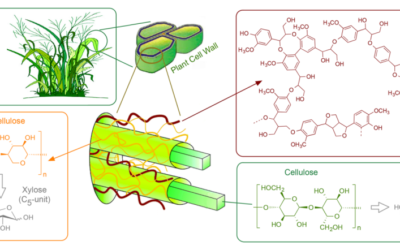
Turning Corncobs into Performance Chemicals
Biomass derived Lycra®?
Major PTMEG Uses
Spandex is a synthetic fiber (polyurethane-polyurea copolymer) known for its exceptional elasticity. It is strong, but less durable than its major non-synthetic competitor, natural latex [1]. The largest consumers of spandex is China, which has in excess of 500,000 tpa production capacity. For years the annual growth rate has been between 2% and 5.5% and spandex trades in the order of US$900/t – US$1,000/t.
Polyurethanes: PTMEG is a polyol in formulations for rigid and flexible polyurethanes, which go into industries, such as automotive, packaging and furniture. They are used e.g. as foams, coatings, adhesives, sealant etc. There is a growing demand for green polyols. Some of them are made e.g. from maize or soya. Global markets [2] for green or bio-polyols are predicted to exceed 1 million tpa by 2018 at an estimated market worth of US$3bn.
Converting furfural into polyurethanes (and other polymers) is an effective form of carbon sequestration!
Commercial furfural production started in 1922 and many of the fundamental research work was already done in the 1940-1950s, when the crude-oil based hydrocarbon revolutions almost “killed” the furfural industry. Little R&D has since been undertaken and that is why furfural is the Sleeping Beauty of all the bio-renewable chemicals, bioplastics and polymers. One day [3], instead from crude-oil, skin-hugging outfits, swimwear, etc. will be made from clean, green and biorenewable furfural.
References:
[1] en.wikipedia.org/wiki/Spandex [2] finance.yahoo.com [3] “Prince” requiredAlso see:
Top 30 bio-renewable chemicals.
Green chemical building block.
Since 2001, DalinYebo provides knowhow:
To convert biomass to value added chemical products and applications that are used in industries such as steel, wood, pharmaceutical, automotive, agricultural chemicals, industrial chemicals, etc.
For the agri (biomass) processing, sugar, pulp&paper, etc. industries, we provide knowhow and technology to convert (residual) biomass to chemicals and energy.
For owners of biomass we offer technology and market access, creating investment opportunities in the cleantech space.
The essential technical challenge facing us, and the world in general, is the complete beneficiation of cellulosic material. We strive to provide viable and practical solution. Contact us to discuss the economic potential of your biomass.



